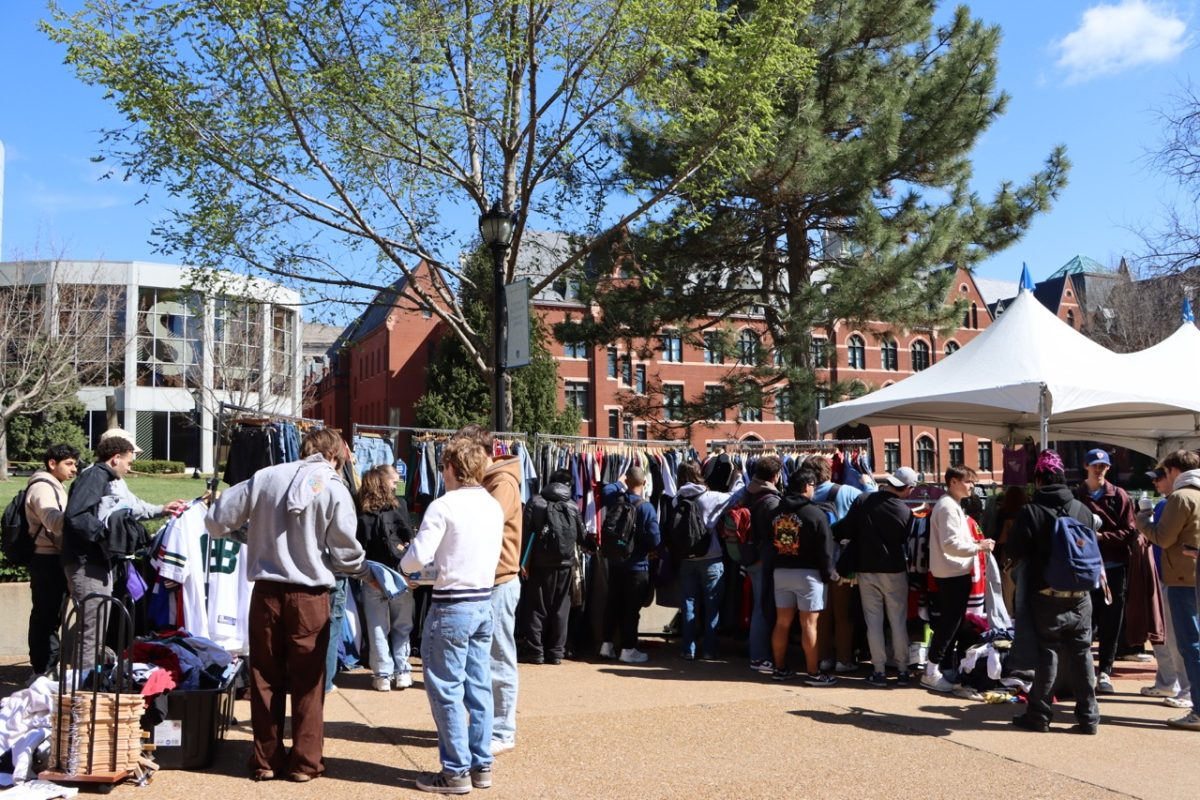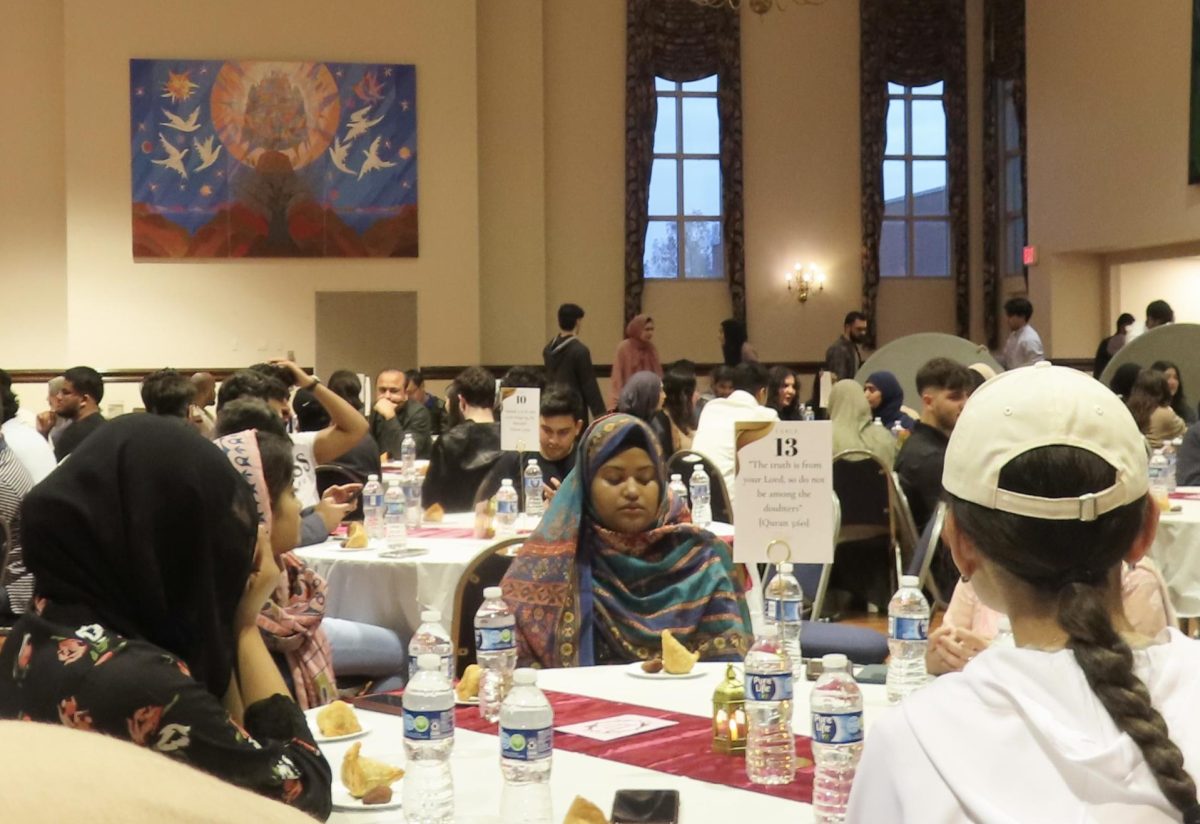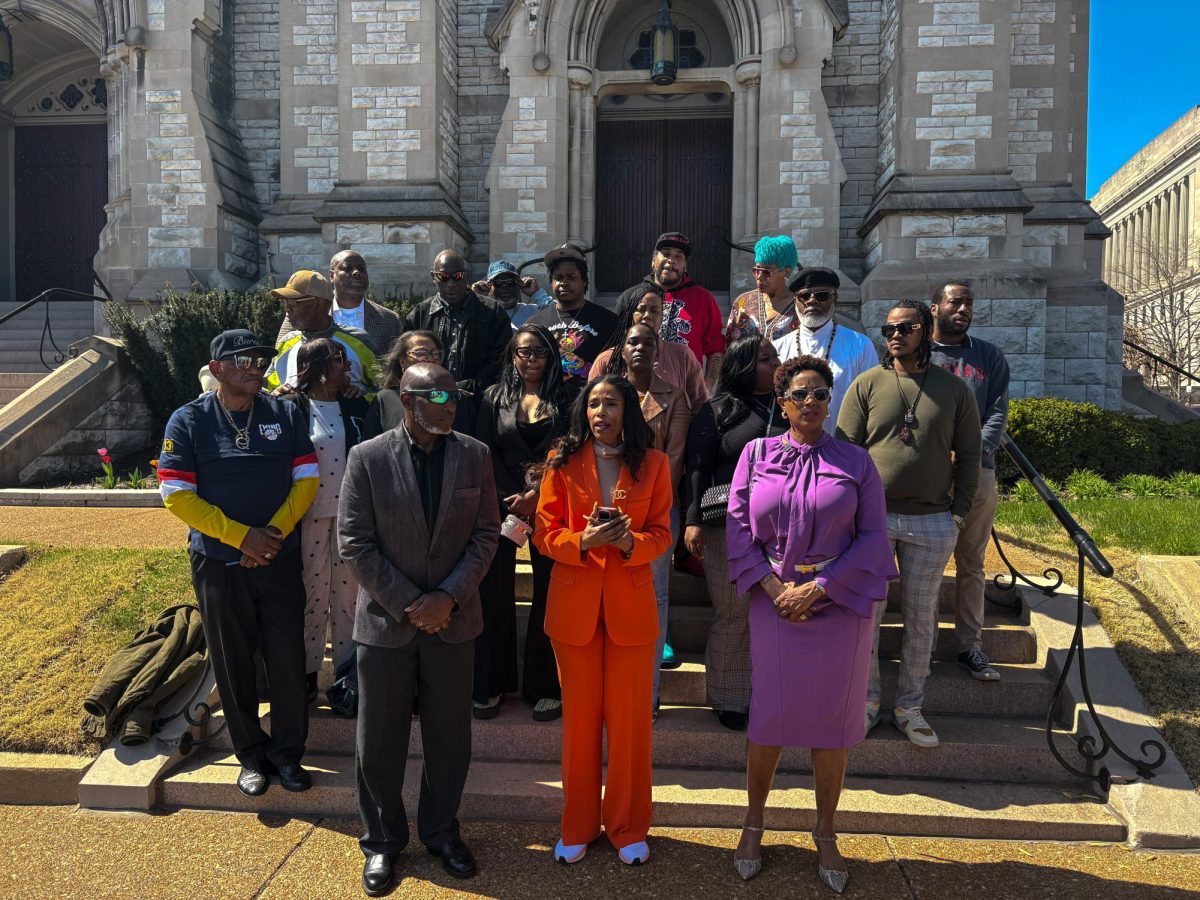In the sermon that he delivered the morning of Feb. 11, 1944, Claude Heithaus, S.J., invited the congregation of students to take a pledge against racism, asking them to do everything in their power to prevent blacks from suffering injustice.
His outcry forced Saint Louis University’s leadership to address the question of segregation directly, and in the fall of that year, SLU became the first university in a former slave state to integrate faculty, staff and students.
The front page of The University News carried Heithaus’ words in full that day. The accompanying article described the arguments he used to denounce racial prejudice, saying that Heithaus “proved with inescapable logic that in the eyes of God and of the Catholic Church a Catholic Negro has exactly the same rights in justice and charity as have Catholic Whites.”
The article highlights several sections of the sermon, including Heithaus’ discussion of the spiritual nobility of the poor, which had sprung from his experience as a chaplain for local jails. It also takes note of Heithaus’ confidence in the student body: “The students of St. Louis University, he said, are better informed and have a better attitude on the Negro question than many adults who profess to know what is in their [the students’] minds.”
Heithaus, who founded The University News in 1921, was also an assistant professor of classical archaeology and the director of University publications. He served in this capacity until June 1945, when he was informed that he would be relocated permanently from the University.
Today, Heithaus is remembered as a hero because of this sermon, which succeeded in integrating SLU eight years before the Brown v. Board of Education decision intended to end segregation forever. But in 1944, Heithaus’ words were not well-received by some Jesuits at SLU and in the Missouri Province, nor by Archbishop John Joseph Glennon.
AFTER THE SERMON
In his article “The Message and the Messenger: The Untold Story of Father Claude Heithaus and the Integration of Saint Louis University,” SLU history professor Paul Shore, Ph.D., discusses the fallout that Heithaus encountered after delivering the 1944 sermon.
The question of integration had surfaced in discussions within the University and among the Jesuits of the Missouri Province during the previous year, although the Jesuits had made no official statement. But Shore wrote that Heithaus’ sermon was “the single event which compelled the university to confront the issue of race discrimination.”
Father Patrick Halloran, SLU’s president at the time, chastised Heithaus for making the topic public when Halloran himself had not made a public statement about integration. Shore wrote of letters exchanged between Halloran and Heithaus on the subject: “In the weeks following the sermon . the president stressed that Heithaus had erred because he had not proceeded through proper channels,” and because “the Jesuits were not yet ready to respond to [the question of integration] formally.”
As debates on the subject continued in the local press, Halloran and Heithaus-who played football together as undergrads at SLU-met with then-archbishop Glennon, who according to Shore “was known as no friend of racial integration” and “at times . played a heavy hand in the internal affairs of the University.”
Although the archbishop discouraged integration, and Halloran initially agreed that it was not time for a change in policy, on April 25, 1944, Halloran made an official announcement that five black students had been registered at SLU for the summer session. Local papers elicited no comment from the archbishop, according to Shore.
Meanwhile, Shore said, Heithaus was told not to discuss the topic publicly, which he obeyed in the months immediately following the February sermon. But in an October speech delivered to the League of Women Voters, and then in a commentary published in the U. News in March 1945, Heithaus came out strongly against opponents of racial integration.
In the October speech, he “compared white supremacists to Nazis,” which according to Shore was controversial “in a nation that was just beginning to become aware of the extent of the Holocaust.” Shore said that the U. News commentary discussed a hypothetical situation, understood as an allegory to the issue of race prejudice, in which “Christians would be compelled to accept and even endorse cannibalism because it was the ‘custom’ of the land in which they found themselves.”
And although there was no backlash from SLU students after integration took place-something that the Jesuit community had feared-the Jesuits criticized Heithaus’ brazen statements on the topic of race.
As a result, Provincial Zuercher advised that Heithaus be removed from the University. His letters to Zaccheus Maher, Assistant of the Society of Jesus for America, made it clear that Heithaus’ removal was not based on a personality clash with Halloran. In a letter quoted by Shore, Zuercher said that Heithaus was “forcing the entrance of negroes into St. Louis University and championing their cause in a cold blooded calculating manner.”
As Heithaus was informed that he would be removed from SLU, he received a letter from Zuercher and four other Jesuits of the province. According to Shore, their reasons for Heithaus’ removal included “disobedience, trying to force Halloran’s hand in the question of integration, insincere interpretation of an order of holy obedience, and disloyalty to the Archbishop, Holloran, and the faculty of the university.”
According to Shore, the University said that the relocation of Heithaus and George Dunne, S.J., another Jesuit who was a vocal proponent of integration, had nothing to do with “the race question.”
THE ORAL TRADITION
Despite this claim from the University, many people in the St. Louis community thought that the removal of the priests had everything to do with the issue of racial integration.
An article in the St. Louis Post-Dispatch described the situation with this headline: “Two on St. Louis U. Faculty Out Over Negro Students.” The University never addressed these perceptions of the event, according to Shore.
Heithaus himself never spoke openly on his departure from SLU, and according to Shore he was not an active participant in the debate over racial integration as it raged during the 1950s and 60s.
Heithaus believed that his outspokenness was “true to the educational mission of the Church,” and thus was not an act of disobedience, according to Shore. But Halloran was Heithaus’ superior both as a University administrator and within the religious order, as Halloran was Rector of the St. Louis Jesuit community.
Thus, Heithaus’ forcefulness was “far more than the act of an indiscreet employee; it was a challenge to the sancrosanct authority located within a Counter-reformation tradition of ‘holy obedience,'” according to Shore.
Heithaus’ actions defied the culture of St. Louis in the 1940s, which still espoused institutitional segregation, as well as the Jesuits’ practice of acculturation, Shore wrote, so his silencing “can be placed within an historical context which may cause us to refrain from making a hasty judgment about his superiors.”
When Heithaus passed away on May 12, 1976, his death was reported by the University “without much attention to the role he had played in bringing racial integration to the university, and no discussion of the censure he incurred from his superiors,” Shore observed. Heithaus’ sermon often surfaces as a “prologue” to the story of integration at SLU, which according to Shore evades the fact that “the university itself and the Jesuit community have never formally repented their actions, nor honored Heithaus in a way commensurate with the contributions that it now acknowledges he made.”
Shore notes that there is no marker or memorial to Heithaus on SLU’s campus, nor is there any scholarship fund or endowed chair established to honor the late Jesuit-this despite the fact that Heithaus received approbation for his outspokenness from national leaders later in life, including the General of the Society of Jesuits, Pedro Arrupe, S.J.
But Shore said that oral tradition within the Jesuit community in St. Louis “has kept alive the story of [Heithaus’] refusal to remain silent on an issue that in the post Vatican II world is seen as crucial to the educational mission of the society.”
HEITHAUS’ MESSAGE TODAY
More than half a century later, institutional segregation is a thing of the past, but Heithaus’ call to fight prejudice still holds power for the SLU community.
University Provost Joe Weixlmann, Ph.D., who served as the editor of African American Review from 1976 to 2004, said that Heithaus’ use of the terms “negro” and “colored” might seem quaint or even offensive to modern readers. However, Heithaus’ words were “designed to challenge the white racist psyche and to call upon the American majority to act in a different, truly Christian way that acknowledges the worth of all God’s children.”
William Faherty, S.J., professor emeritus of history at SLU, was a friend of Heithaus’ in the years following the 1944 sermon. After Heithaus passed away, Faherty became the director of the St. Stanislaus Historical Museum of Western Jesuit Missions, which Heithaus worked to establish.
“It was calm and it was well-reasoned. There was no name calling,” Faherty said of the sermon’s enduring power. “There was an awful lot of ignorance,” he said, among integration’s opponents, many of whom did not believe that blacks could pass the entrance exam to attend SLU.
This ignorance and snobbery that Heithaus spoke about, and helped to eradicate, still has the danger to keep SLU isolated from its surrounding neighborhoods-which can prevent students from “eradicating this prejudice wherever they find it,” as Heithaus beseeched them to do.
“Today, Saint Louis University is still located in midtown St. Louis, an oasis of green space and fountains a short distance from poverty stricken neighborhoods,” Shore wrote. “Despite considerable efforts by both whites and blacks, [St. Louis] is still segregated in significant ways and is far from resolving its racial problems. Its citizens are heirs to the injustices and prejudices which motivated Claude Heithaus to speak out.”
SLU senior Elliott Kavanaugh said that racial divides exist in the city, as students are sometimes afraid to venture too far off campus, writing off the neighborhoods as “ghetto,” a term Kavanaugh described as racist and classist.
“There’s a level of fear that’s instilled from the time [students] get here, from their parents telling them, ‘You’re going to be in a big city. It’s dangerous. It’s not in our safe, suburban, gated neighborhood, watch out,'” Kavanaugh said. And that fear, he said, is what Heithaus’ words speak out against today.
“SLU has to be a part of this city and this neighborhood and integrated into it-not an island in the middle of a sea of decay and urban problems,” he said. “This [sermon] means so much because [we] are the future leaders . we have to make sure these [issues] are the center of our decision-making. Social justice-that has to be our commitment, and that’s the value of a Jesuit education.”
SLU 2005 alumnus Chris Clark, who served as president of the Black Student Alliance, echoed this sentiment: “I am a firm believer that to whom much is given, much is expected,” he said.
Clark noted that had it not been for persons like Heithaus, he might have not had the opportunity to go to SLU.
“In other words, I would not be who I am today,” he said. “We must continue to challenge the ignorant base on which prejudice is built . Those of us who are Christians have a responsibility to love one another and to do our best to help those in need, regardless of skin color.”









